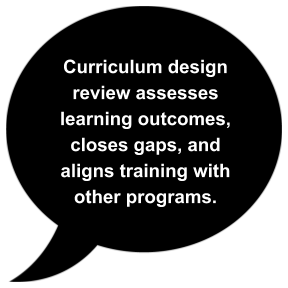Author(s): Sue Bauer, Trudian Trail-Constant
Editor: Dr. Denise Lowe
Dear ADDIE,
I’m an Instructional Designer at a R1 university where our teaching and learning center has recently merged with our Academic Technologies team. As part of this process, I’ve been asked to lead a curriculum review of all the workshops, institutes, and training we offer to our teaching community (this includes faculty, graduate students and post-docs). This is a large task that involves reflecting on what competencies we want them to have, and where there is overlap or gaps in our offerings. One of the attributes we want to assess is modality and where it might make sense to increase our offerings either fully online or blended. My questions are:
- What suggestions or recommendations do you have for designing online faculty development courses? Are there specific examples where a self-paced, fully online facilitated or blended might be the best choice?
- What approaches have others taken to broadly reviewing all their offerings and going through the process of curriculum mapping?
Signed,
Lost in Translation
Dear Lost in Translation,
Merging your teaching and learning center with your academic technologies team sounds like an exciting but daunting process. I hope the consolidation of the teams improves the progress toward your common goals as the teams learn to communicate in each other’s design language. As you mentioned, this is a critical time to review your faculty development offerings to ensure your curriculum design develops the intended learning outcomes free of gaps and superfluous overlaps, and aligns across all offerings.
As you review the gaps in your curriculum and select the modalities in which to design and deliver new offerings, consider utilizing a faculty development framework. A recent TOPkit Digest described three top faculty development models for planning new or revamping faculty development programs.

Whichever framework you use to redesign your faculty development program, consider incorporating these three components in your project to strengthen your effectiveness:
- Survey your stakeholders as early in the redesign process as possible, including your unit personnel, institutional faculty, and even stakeholders external to your institution. This survey will help garner valuable feedback and preferences regarding faculty development in general, your past offerings specifically, and future faculty development offerings. The results of your survey can inform your decisions about modalities, pacing, gaps, etc.
- Continually align the learning objectives, content, activities, and assessments throughout your redesign. This can help you close gaps and reduce needless overlaps in your offerings and outcomes.
- Include a timeline in your project planning. This is important for keeping everyone involved in sync and to ensure the redesign actually gets completed. The timeline should include:
- Tasks to be completed
- The expected duration of each task
- The date on which each task needs to be complete
- Dependencies between tasks
Another resource you may find useful is the Faculty Development Decision Guide (FDDG), an interactive tool designed to allow institutions to evaluate their online faculty development needs, create a plan of action for their own online faculty development program, and have access to resources that will support faculty development. This tool is based on the Quality Transformation Model for Faculty Development (QTMFD).
Whatever the outcome, I hope your unit will share lessons learned and recommendations when your process is complete and your newly formed unit is in operation and progressing toward its objectives.
I’m sure there are many more tips that others in the community have found useful. What strategies do you use for effectively engaging faculty in the online course design process? Please share your thoughts with our TOPkit community on LinkedIn!
